As a podiatrist practicing in the St. Louis area I was motivated to write on Albert Pujols’s latest foot surgery. Since I’m a doctor as well as a fantasy baseball fanatic, I wanted to clarify from all I’ve read on different sites as to what procedure did Mr. Pujols exactly had in November of 2015 and what consequences might it cause to his offensive production for 2016 and beyond in MLB. One article states that it was his big toe while another one wrote about it being in or near his arch. For the average, non-medical educated fan, you wouldn’t know any better, but for me, I can help everyone understand the foot surgery and translate it into laymen terms and maybe even help you win your 2016 fantasy baseball leagues.
I cannot 100% exactly tell you the procedure that was performed on his foot because number one was not his foot surgeon and number two it’s called a HIPPA violation, however after reading several articles I came upon this quote from Mr. Pujols:
“There’s some days that I feel really good, and then there’s some days when I hit a wall,” Pujols said on Sept. 22. “And it’s uncomfortable. It’s right on the bottom, right on the freaking toe right here, like in my middle toe. It hurts.”
The key words from his quote are bottom and middle toe. It is not the arch, ankle or heel which he had plantar fascitiis issues even dating back to 2005 while in St. Louis. The heel issues are not directly related to this current issue although it may have contributed to the current injury. In theory, if he was still bothered by heel pain then he would compensate by shifting his weight to his less painful area of the forefoot or also known as the ball of his foot. This shifting of weight is the main force that drives tension into the ligament that he injured.
What is the plantar plate?
The surgery was a plantar plate repair. The plantar plate is the name of the ligament that helps stabilize the toes onto the foot. If the ligament is torn it will cause weakness, instability and pain to the joint between the toes and the foot. Most commonly the 2nd toe joint is affected and the ligament is located on the bottom of the foot.
I do perform this surgery using the Arthrex CPR Viper in my own practice and have some knowledge and experience with the repair as well as the postoperative care of this procedure. This surgery will take about 4-5 months to completely recover but complications are common with this type of procedure as it will require a surgical fracture of the metatarsal bone to correct the torn ligament. Basically, you have to break a bone to fix a ligament. Think of this plantar plate surgery similar to an ACL repair of the knee, just on a much smaller level.
A similar problem is also known as turf toe. Turf toe is mainly on the bottom of the big toe but is not as severe as a plantar plate tear and usually doesn’t require surgery. Remember Deion Sanders? He had problems with turf toe injuries and had similar surgeries and he talks about why he can’t dance because of it! Are Albert Pujols’s dancing days over too?
Why this foot surgery will decrease his power?
Simple foot biomechanics and how the back foot on a baseball swing helps start the power to hit the baseball. Since Albert Pujols is a right-handed batter his right foot (surgical repair foot) is his back foot. As you can see from this excellent video below by www.yougoprobaseball.com showing how much the force begins on the back foot exactly where the surgery repair will be performed. I would have to assume that Albert’s ability to plant the back foot to begin the process of the swing will cause some delays of healing during his recovery. You can even read his quote from this LA Times article about how he had problems planting and driving on that back foot in September 18, 2015. The exact location of where a batter plants their foot is at the ball of the foot which is directly below the repaired ligament.
Interesting stats on Albert Pujols before his foot surgery:
Before he injured his right foot we already saw a slow decline over the last 4 to 5 years since he was traded to the the Angels. His strike out rate (K%) increased from approximately 8% between 2005 and 2011 to approximately 12% in 2012-2015. Also his line drive rate (LD%) decrease from 19% to 16% just over the last couple of years. His walking percentage or his ability to be more patient at the plate and take a walk has declined as well, from as high as 16% to as low as 6% in the last three years. And lastly, note that is OPS (on base percentage + slugging) in the second half of 2015 was only .707! Supposedly his injury occurred in the August 28, 2015 game against the Cleveland Indians on a run to first.
In conclusion, a foot surgery of this type, in the specific area of the forefoot, from a power hitter, will be costly. Even a younger player in their twenties, this injury would disrupt their career. Albert Pujols may continue his slow decline partly because he’s turning 36 this year and partly because of this surgery. Remember that most professional baseball players’ statistical numbers do decline after their 30s (post-PED era) but with 5 more years left on his 10 year/$240 million contract is making the St. Louis Cardinals decision to let him go, look like geniuses!

Dr. Dennis M. Timko
Podiatrist
Dr. Dennis Timko, is a podiatrist in the St. Louis, Eureka, MO. area. Dr. Timko specializes in diabetic foot care, foot surgery, AFOs, and orthotics. Dr. Timko is the solo owner of Arch City Foot & Ankle, which has been in business since 2003.
